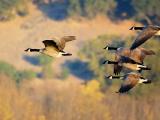Aug 27, 2004 (CIDRAP News) – Chinese agricultural officials, seeking to allay concerns about recent reports that some pigs in China carried the H5N1 avian influenza virus, said yesterday that no pigs are currently infected.
"There are no pigs in the Chinese mainland infected with the H5N1 virus, or avian flu virus, and relevant research has reached no clear conclusion on H5N1 infecting pigs," said a report by Xinhua, the state news agency, based on statements by the Ministry of Agriculture.
Last week, Chinese avian flu expert Chen Hualan reported at a meeting that the H5N1 virus had been found in pigs both last year and this year, to the surprise of international health officials. On Aug 23, Chinese health officials confirmed that the virus had been found in some pigs last year but denied any such findings this year. Infection of pigs with the H5N1 strain had never been reported before, according to the World Health Organization (WHO).
The report aroused international concern because pigs can carry human as well as avian influenza viruses, creating a potential for the viruses to combine and form new strains that could trigger a human flu pandemic.
According to yesterday's Xinhua report, Jia Youling, director of the agriculture ministry's Veterinary Bureau, said two strains of H5N1 virus were isolated from pig samples collected "between 2001 and 2003." Further research showed that these isolates were "highly isogenous with the H5N1 duck virus isolated before," which suggested that the pigs had an "incidental infection" with the duck-origin virus, the report quoted Jia as saying.
"No new strains [of H5N1 virus] were isolated during the intense surveillance" triggered by the findings, Jia was quoted as saying.
When H5N1 avian flu broke out in parts of China earlier this year, local health agencies and national research institutes were ordered to increase surveillance of pigs, according to the report. "The surveillance results show that no other H5N1 strain was isolated from pigs in the mainland," Jia said.
He also was quoted as saying, "It's worth noting that carrying a virus does not mean infection. Similarly, the virus identified does not necessarily mean that there is a presence of an epidemic." He pledged that if an outbreak occurred in pigs, China would quickly notify international health organizations.
Jia also said there was no clear evidence of transmission of H5N1 virus from pigs to humans, according to the report. "We will certainly reinforce research programs on the relationship between H5N1 carried by pigs and avian flu infecting human beings," he promised. "And by doing so, we will be able to prevent and control any outbreak of this kind."
In an Aug 25 statement, the WHO said it was not clear whether the H5N1 virus has taken hold in pigs. "What is unclear from the few studies which have been conducted is whether the H5N1 virus has already become established in pig populations in China," the agency said. Consequently, "assessing the consequences of this information for public health is difficult."
The WHO also said that, given the widespread avian flu outbreaks in Asia and the ability of flu viruses to cross species barriers, "it is inevitable that H5N1 virus will be detected in some pigs." Pigs in Asia, Europe, and Africa have been known to carry human influenza H3N2 viruses, the agency said.
But the likelihood of genetic mixing that could spawn a pandemic strain of virus is unknown, the WHO said. "The role of pigs in genetic reassortment is not fully understood," the statement said. "While there has been no known natural occurrence of reassortment of influenza viruses in pigs that resulted in a new pandemic strain, the probability of this occurrence is not negligible."
The agency called for more research on flu viruses in pigs in China and other countries that have had H5N1 avian flu outbreaks. It also called for laboratory research on the probability of virus reassortment, the possible pathogenicity of a reassorted virus, and the risk that pigs will serve as a vehicle for emergence of a new strain.
See also:
Aug 24 WHO statement
http://www.who.int/csr/don/2004_08_25/en/


















